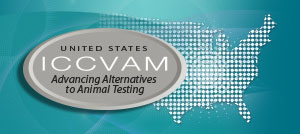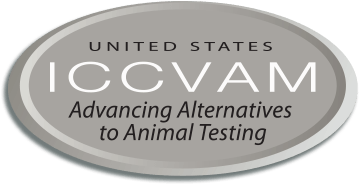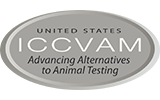Key NICEATM and ICCVAM Accomplishments and Impact
Key accomplishments of ICCVAM and ICCVAM member agencies in support of the ICCVAM mission during 2022 and 2023 include:
- Activities to support definition of evolving validation and confidence frameworks. NICEATM and ICCVAM agency scientists published articles describing approaches for quality management (Petersen et al. 2023) and establishing confidence (van der Zalm et al. 2022) in new approach methodologies (NAMs). This work and other ongoing activities informed an update of ICCVAM criteria and processes for validation, qualification, and regulatory acceptance of toxicological test methods.
- Publication of articles describing agency information needs and testing requirements. ICCVAM workgroups published journal articles describing U.S. federal agency information needs and testing requirements for nanomaterials and ecotoxicity. An ICCVAM workgroup published an award-winning article describing federal agency application of in vitro to in vivo extrapolation. NICEATM scientists and collaborators also prepared a review of acute systemic toxicity testing requirements for jurisdictions that participate in the International Cooperation on Alternative Test Methods (ICATM).
- Curation and publication of human skin sensitization database. ICCVAM agencies and NICEATM collaborated with the German Federal Institute of Risk Assessment to compile the largest existing database of human reference data for skin sensitization.
- Broadening applicability of defined approaches for skin sensitization. Following international acceptance of defined approaches to skin sensitization, ICCVAM agency scientists evaluated use of defined approaches to characterizing sensitization potential of agrochemical formulations and isothiazolinones, a type of preservative used in consumer products.
- Development of approaches to predict and characterize cardiotoxic potential. NIEHS scientists developed assays and computational models to identify chemicals with the potential to affect the cardiovascular system, as well as approaches to predict the exposure levels that might be of concern for this endpoint.
- Expansion of the Integrated Chemical Environment. NICEATM created the Integrated Chemical Environment (ICE) to provide curated data and tools for safety assessment of chemicals. Updates to ICE tools during 2022 and 2023 enabled searches using chemical names and a broader range of chemical identifiers, allowed users to upload their own data for modeling or visualization, expanded options for exploring chemical properties, and provided the option to model exposure to the developing fetus. In addition to updates to specific ICE datasets, ICE data updates facilitated user access to large data sets and added annotations to better characterize data quality and biological relevance.
- Web tools for chemical exploration and toxicity prediction. In addition to ICE, ICCVAM agencies released web tools to enable public access to leading-edge technology for chemical exploration and toxicity prediction. These include:
- A broad range of tools provided by EPA for chemical exploration and toxicity prediction, along with a training program to support their use.
- STopTox web portal for prediction of acute toxicity.
- DASS App for application of defined approaches to predict skin sensitization potential.
- Updates to the ChemMaps and OrbiTox tools enabling visual exploration of chemical properties.



